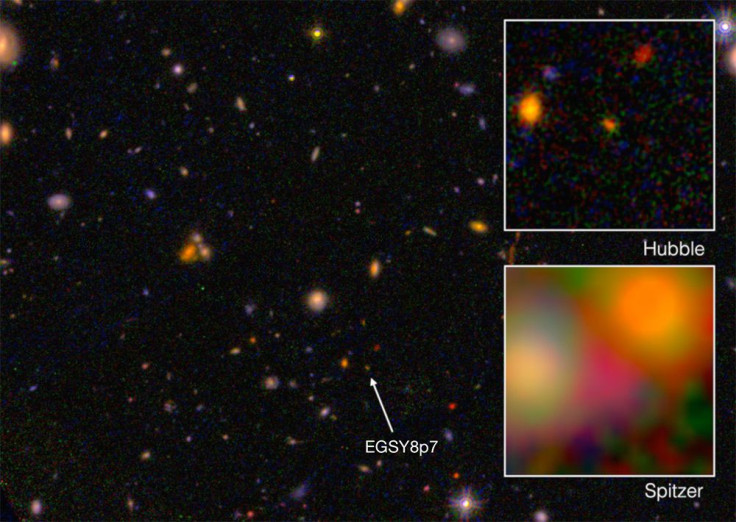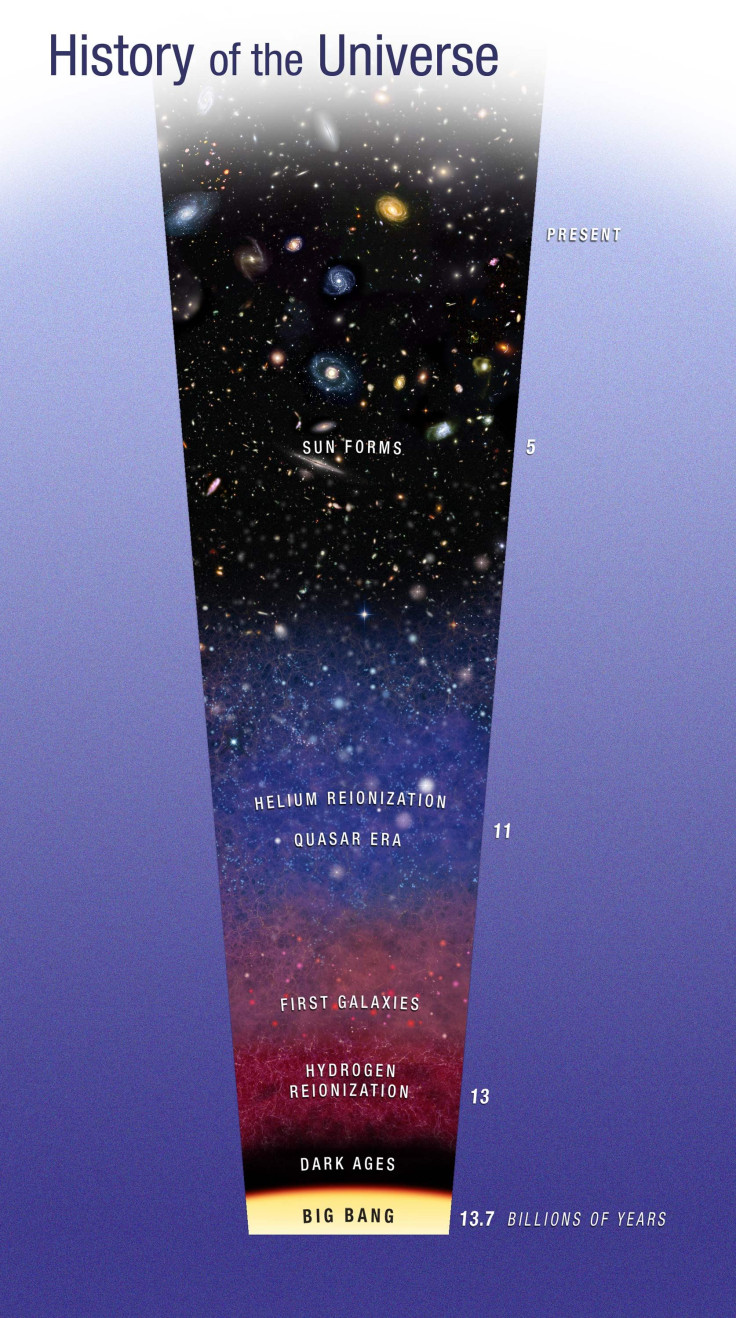Universe's Oldest Known Galaxy Raises Fresh Questions About Cosmic Evolution

Scientists have detected an “unusually luminous” galaxy that they now believe to be the oldest galaxy ever observed. EGS8p7, detected using NASA’s Hubble Space Telescope and the Spitzer Space Telescope, is believed to have come into existence just 600 million years after the Big Bang, making it approximately 13.2 billion years old.
In addition to providing another candidate for the crown of the oldest galaxy in the cosmos, the latest discovery is also raising questions about what we currently know of the early universe.
After the Big Bang, the universe was a hot “soup” of charged particles. These free-floating charged particles -- electrons and protons -- scattered photons, preventing light from traveling freely. By approximately 400,000 years after the Big Bang, the universe cooled enough for free electrons and protons to combine into neutral hydrogen atoms that filled the universe, allowing light to travel through the cosmos. Then, when the universe entered the “epoch of reionization” about half a billion to a billion years since its birth, the first galaxies turned on and reionized the neutral gas, marking the end of the so-called “dark ages” in the cosmic history.

When hydrogen gas is heated by the ultraviolet emissions of new stars, it produces a spectral signature called the Lyman-alpha line. When astrophysicists see a Lyman-alpha line, it’s usually a sign of star formation in a young, newly forming galaxy.
So, in theory, scientists should not have been able to detect the Lyman-alpha line of an ancient galaxy such as EGS8p7 -- as it would have been absorbed by the surrounding neutral hydrogen gas.
“The surprising aspect about the present discovery is that we have detected this Lyman-alpha line in an apparently faint galaxy at a redshift of 8.68, corresponding to a time when the universe should be full of absorbing hydrogen clouds,” Richard Ellis, a former faculty member of the California Institute of Technology, and co-author of a paper detailing the findings, published in the Astrophysical Journal Letters, said in a statement.
Redshift, a phenomenon used to measure distances of galaxies and stars from the earth, refers to the “stretching” of light waves as the object moves away from the observer. Longer wavelength appears redder in color, so the spectra of more distant objects will be shifted toward red.
“The galaxy we have observed, EGS8p7, which is unusually luminous, may be powered by a population of unusually hot stars, and it may have special properties that enabled it to create a large bubble of ionized hydrogen much earlier than is possible for more typical galaxies at these times,” Sirio Belli, a Caltech graduate student who worked on the project, said, in the statement.
As a result of the discovery, the researchers are now re-examining the timeline of reionization, which could ultimately help refine our current understanding of the evolution of the cosmos.
© Copyright IBTimes 2024. All rights reserved.












